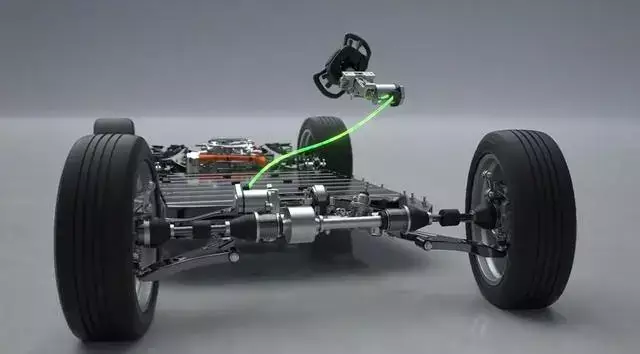Futuristic Auto Industry
By Zheng Wen, edited by Zhou Changxian
The automotive industry is heading steadily towards a sci-fi movie world, with many twists and turns.
In the 2004 film “I, Robot”, the Audi RSQ Concept car that the protagonist, Will Smith, drove had an eye-catching and retractable steering wheel. It could shrink in self-driving mode and extend in manual driving mode. Two decades later, in the midst of new technological changes, such futuristic elements seem to be within reach.
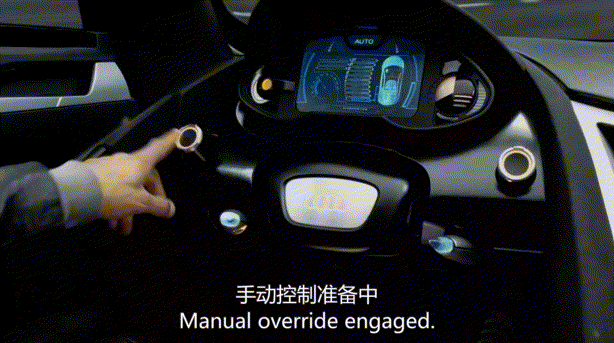
Last year, Tesla announced the redefinition of the steering wheel. The official name is the Yoke rectangular steering wheel, which is available on the new Model S. Since then, many manufacturers have incorporated this concept into their considerations of vehicle transformation.
The rise of the Yoke steering wheel is not just a simple change in shape; it represents the development of line control steering technology that is consistent with the trend of intelligent driving.
The key to advanced intelligent driving is high execution precision, fast response, and high safety. Therefore, it is necessary to transmit instructions between the chassis via electric signals, instead of through mechanical connections among individual actuators. This has promoted the transition of automotive chassis from traditional to line-controlled.
In general, intelligent driving technology is divided into perception, decision-making, and execution. The line-controlled chassis is the carrier of the execution process of highly automated driving cars. It mainly includes five major subsystems: line-controlled brakes, line-controlled steering, line-controlled suspension, line-controlled throttle, and line-controlled gearbox. Among them, line-controlled steering is the core component that controls lateral movement and is an important execution mechanism for advanced intelligent driving.
Since line-controlled throttle and line-controlled gearbox are relatively low in technical difficulty, they have high permeability at present. For example, the classic application of line-controlled throttle is adaptive cruise control. However, line-controlled suspension, line-controlled steering, and line-controlled brakes have higher technical barriers.
According to Cinda Securities research, the current penetration rate of line-controlled brakes is only 3%, and the permeation rate of line-controlled suspension is even lower than 3%. Line-controlled steering has not yet been produced on a large scale.
Behind the Transformation of Steering Wheels
The development of automotive steering systems has undergone many generations of evolution, from mechanical steering to hydraulic power steering, then to electronic hydraulic power steering, electric power steering, and the next-generation line-controlled steering. Like many other mechanical components, the steering system has completed the transition from pure mechanical structure to electronic control.Early mechanical steering systems consisted of steering control mechanism, steering gear and steering transmission mechanism. The mechanical steering has a transmission ratio of 1:1, and turning the steering wheel requires overcoming resistance to turn the tires, resulting in heavy burden on the driver. Hydraulic power steering was introduced later, which uses an engine-driven steering pump to amplify the force applied by the driver, but this method has relatively high energy consumption.
In 1983, the Japanese company Koyo introduced an electrically controlled hydraulic power steering system, which further used ECU to precisely adjust the steering assistance under different vehicle speeds. The design structure of this system is complex.
The most mainstream product of current vehicle steering systems is electric power steering (EPS), which generally consists of a torque angle sensor, an electronic control unit, a reduction mechanism, a motor, etc.
Based on vehicle status signals such as steering angle signal, torque signal and vehicle speed signal, the electronic control unit of the system calculates the required steering assistance and direction, and controls the EPS motor to output the steering assistance to assist in completing the steering operation.
According to the insured data of domestic passenger cars in 2021, the front-loading rate of EPS is 97.57%. The top five companies in China’s EPS market share are Bosch, NSK, ZF, JTEKT and Yubei Guangyang, with a share of 18.82%, 18.52%, 17.51%, 12.25%, and 8.48% respectively. This segmented field has a high industry concentration, with the top five accounting for 75.58%.
The next-generation steering technology under development, the steer-by-wire system, directly eliminates the mechanical connection between the steering wheel and the steering actuator in the traditional steering system. It mainly consists of road feel feedback, steering execution, controller and related sensors.
Recently, AutocarMax experienced the progress and effectiveness of the related technology at Bosch’s “Innovation Technology Day”. As an important day to showcase innovative achievements in China once a year, Bosch concentrated on the innovations made by the Chinese innovation team at the Donghai Test Technology Center in the past period.
At the event, Bosch shared a new generation of future-oriented chassis solutions – the VDC2.0 system (Vehicle Dynamic Control 2.0) of the chassis control system. The system has three versions: Standard, Customized and Supreme, which correspond to electrification, personalization and high-level intelligence, respectively.In the VDC2.0 standard version, Bosch has introduced an innovative feedforward system that makes the vehicle’s overall dynamic control more precise and smooth. In the customized version, Bosch combines OEM user profiles to create custom-made solutions with user experience as the main scenario. In the VDC2.0 ultimate version, Bosch can fully realize the potential of various systems through cross-domain integration.
AutocarMax experienced VDC2.0 + steer-by-wire on the Lynk & Co 09 model. After the two were linked and integrated, the vehicle’s posture control became more effective and linear.
When the wheels on both sides of the vehicle are driving on roads with different levels of adhesion, there is an obvious loss of control in the vehicle’s posture during acceleration and braking. After the steer-by-wire system is engaged, the driver only needs to slightly turn the steering wheel to fully control the vehicle’s posture and eliminate the feeling of significant body posture loss on the same road condition.
Zhang Ying, the President of the Bosch Chassis Control System in China, explained, “In terms of chassis domain control, for example, when steer-by-wire and braking can be combined, there are many things that can be quantified, such as the steering angle correction required during turning or obstacle avoidance and the speed of a single circle.”
The concept of steer-by-wire for vehicles was proposed by TRW and German Kasselmann in the 1950s. Mercedes-Benz started researching front-wheel steer-by-wire in 1990 and applied the developed steer-by-wire system to the F200 concept car in 1996. The F400 Carving, which debuted at the 2010 auto show, also adopted steer-by-wire technology.
In 2002, at the Geneva Motor Show, the concept car “FILO” developed by Italian company Bertone adopted steer-by-wire and eliminated the steering wheel, using a joystick for steering. In addition, BMW’s concept car BMWZ22, Citroen’s off-road concept car C-Crosser, and many other concept cars also adopted steer-by-wire.
Although many products have remained in the stage of technical demonstration, the situation was ended with the introduction of the first mass-produced vehicle equipped with steer-by-wire technology, the Infiniti Q50, in 2013.
To ensure redundancy safety, the system still retains mechanical connection devices. When the steering gear fails, the clutch between the steering gear and the steering column automatically engages, ensuring the mechanical steering function in emergency situations.
This year, Toyota also announced that bZ4X will be equipped with the One Motion Grip system for drive-by-wire steering. It completely eliminates the mechanical connection between the steering gear and the steering column, and the steering wheel is connected to the front wheels via wires and electronic systems.
Compared with mainstream electric power steering systems, drive-by-wire steering has better responsiveness and expandability of intelligent driving functions. After achieving physical decoupling between the steering wheel and the steering system, the correctness and safety of emergency steering operations can also be improved.
Taking bZ4X’s drive-by-wire steering as an example, it has the following features:
-
The steering wheel turning angle is set to ±150°, which is less than one circle. When making sharp turns, the steering operation becomes more relaxed, reducing the burden on drivers in scenarios such as U-turns, parking, and cornering. Therefore, the steering wheel can also become a yoke-type steering wheel.
-
Due to physical decoupling, the sense of control is improved.
-
With electronic control, one system can have multiple driving modes.
-
The movement of the tires is controlled to ensure vehicle safety when driving on uneven roads or when the lane tracking function is running, which was mentioned in the experience of Bosch technology just now.
-
The absence of a rigid connection to the steering column provides more legroom for the driver’s seat.
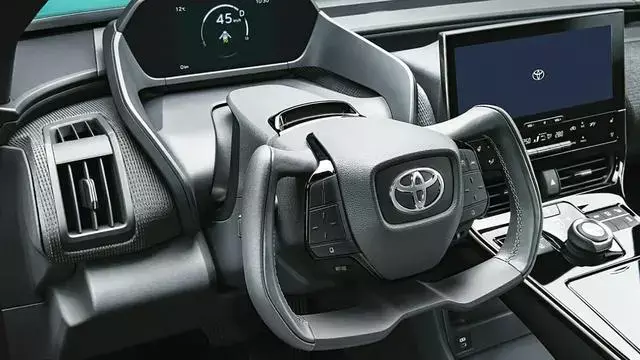
However, due to the different feel of drive-by-wire steering compared with traditional steering, it requires a certain adaptation process. For example, when making a U-turn, the initial turning angle of the wheels will be roughly the same as that of the steering wheel. When the steering wheel is closest to the limit angle, the wheels will accelerate and turn more obviously. Although this design makes the action on the steering wheel smaller, it is also easy to oversteer.
Standard for Autonomous Driving?
New technologies must go through a tortuous process as they mature.Infiniti had the production technology as early as 2013, so why hasn’t there been mass promotion? At the time, the Infiniti Q50 had a recall due to a programming deviation in the control unit of its electric power steering (EPS) system.
The official reason given was that when the engine starts with low battery voltage, the control unit might misjudge the steering wheel angle, leading to a difference between the steering wheel and the wheel turning angles. Even if the steering wheel is returned to the neutral position, the wheels will not return to a straight running state. Such problems that go against driver intent pose serious safety risks.
It is true that some car owners have reported issues with the calibration of this line-controlled steering system, including incorrect steering feedback, logical inconsistencies, and abnormal steering, meaning that drivers have not yet experienced an improvement in driving experience from this system.
Toshihiro Uchiyama, CEO of the electric power steering system supplier, NSK in Japan, has said that even if a line-controlled system is used, a mechanical system is still needed as a backup. Unless there are new safety requirements or the reliability of the line-controlled system experiences a revolutionary improvement, there is no need to pay a huge cost to pursue new technology as current technology can meet needs.
If a large amount of redundant design for functional safety is required for line-controlled steering, then reducing design and manufacturing costs while ensuring safety is a problem that companies wishing to employ this technology in the future need to overcome.
Currently, the unit price of EPS is around 1500 yuan, while the estimated unit price of the line-controlled steering system will be around 4000 yuan.
Electronic components are not as reliable as mechanical components. For example, Bosch has multiple sensors installed at the steering wheel to achieve redundant input signals, and multiple motors and ECUs to achieve control redundancy in the steering mechanism.
Another important issue is that simulating road feel is not an easy task; it requires complex force feedback motors, implemented algorithms, and parameter calibration, which incur high costs, but still may not produce good simulation results. Many people who have driven the Q50 have said that the simulated road feel is not as real as traditional mechanical transmissions, such as racing simulators.“`
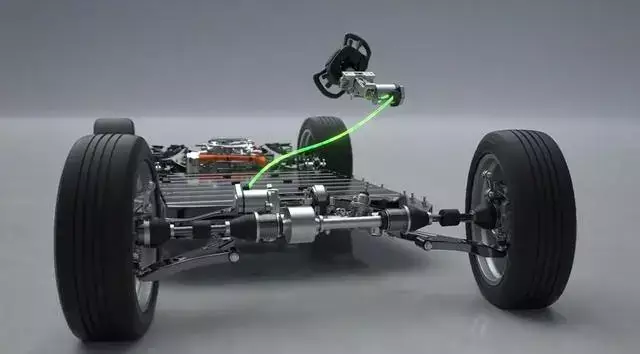
The steer-by-wire technology can simulate all aspects of the steering system related to the electric signal, including the steering ratio, overall steering circle, linear adjustment of steering feel, and transfer of road feel. The adjustment of steering feel now has more possibilities, enabling the experience of different steering feels within one system.
However, at present, the road feel feedback of the steer-by-wire system is mainly simulated by calculating the steering resistance torque through dynamic model calculation and parameter fitting. During the parameter adjustment, empirical experience and continuous trial and error are often used to complete the measurement. This optimization process requires a long way to go. In addition, the reliability of the complex software algorithm of steer-by-wire still needs to be verified.
Perhaps, the problem of road feel may not completely disappear as a consideration for OEM until truly autonomous driving comes.
Currently, the products of steer-by-wire are still in the stage of research and development or small-scale application.
According to the disclosed information of various companies, the steer-by-wire products from suppliers such as Schaeffler, JTEKT, and Nexteer are expected to be mass-produced in 2023, and the relevant technology of Great Wall Motors is also expected to be mass-produced in 2023. Bosch and Volkswagen plan to mass-produce in 2024, and PSA plans to mass-produce around 2025.
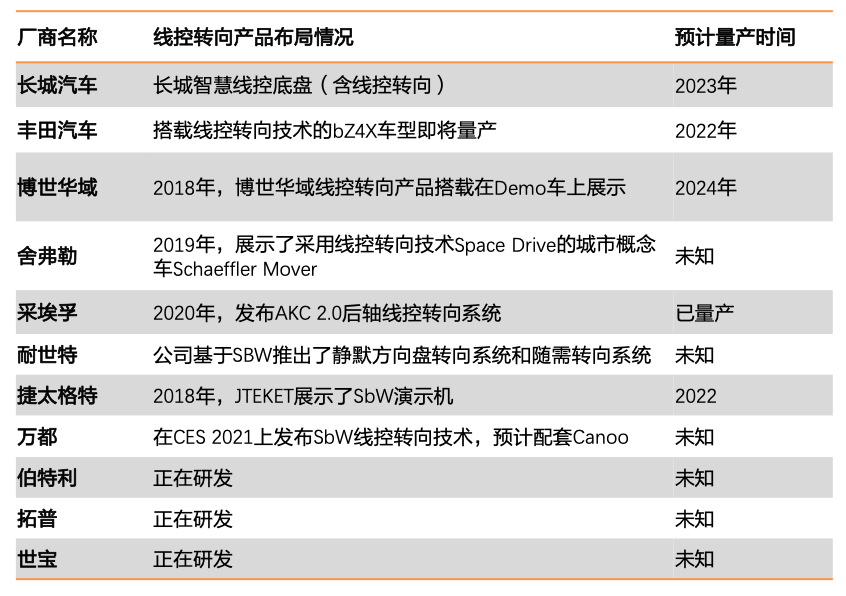
The steering system has a certain degree of technological continuity, and the main manufacturers of steer-by-wire products in the future are also easy to expand among players such as Bosch, NSK, and ZF, who have a high proportion of the EPS market share mentioned above.
Bosch’s R&D personnel stated that for a technology to be widely used, it must meet the conditions of multiple parties, and the related market will usher in a real outbreak.
The same applies to steer-by-wire technology. Will OEMs be willing to use it, will the market buy it, and will the added R&D costs bring a significantly better feel? These are all important influencing factors.“`
This article is a translation by ChatGPT of a Chinese report from 42HOW. If you have any questions about it, please email bd@42how.com.
